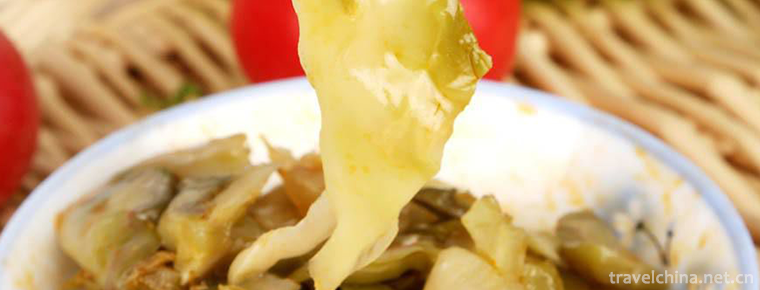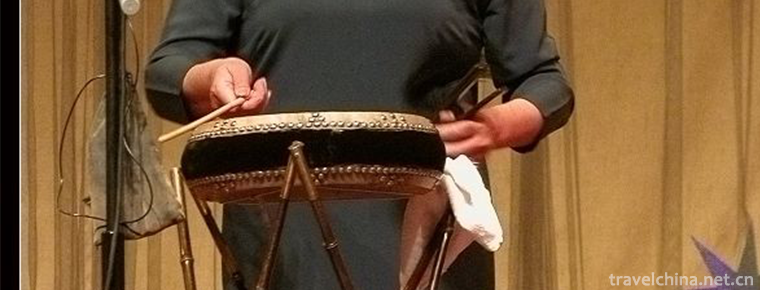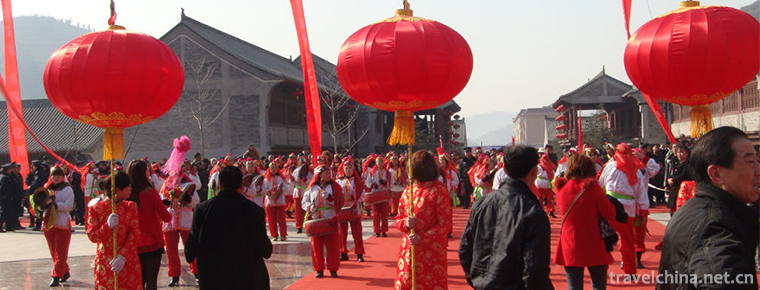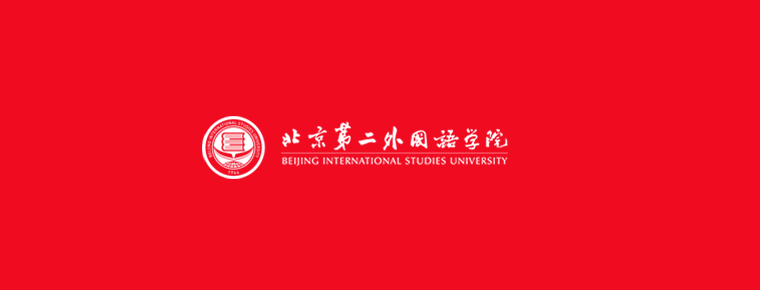Traditional Manufacturing Techniques of Preserved Vegetables
Traditional Manufacturing Techniques of Preserved Vegetables
Traditional production techniques of mustard tuber, local traditional techniques of Fuling District, Chongqing City, one of the national intangible cultural heritage.
Fuling mustard was created in Guangxu 24 years of Qing Dynasty (1898). It has been popular with consumers since it came out, and its influence has been increasing. Fuling traditional handcrafted mustard pickles are fresh, tender and tasty, with unique flavor.
In 2008, the traditional production techniques of mustard tuber were approved by the State Council of the People's Republic of China and included in the second batch of national intangible cultural heritage list, the heritage number is_-159.
historical origin
In the 18th century, before the invention of mustard tuber, folk cabbage (cabbage head) salted vegetables were only for family consumption. Big temples grow cabbages and make pickles and dried salted vegetables, which are mainly used for temple banquets and entertainment of pilgrims. Qiu Shou'an, a Fuling native, discovered the business opportunities contained in mustard, organized and improved the processing technology, named this new pickled vegetable product "mustard", put it into the commodity market, and continuously nurtured and opened up the sales market, which opened the pioneer of Chinese mustard industry.
During the reign of Guangxu in Qing Dynasty, Qiu Shou'an opened a "Rongshengchang" sauce garden in Yichang, Hubei Province. He also engaged in a variety of pickling businesses. Deng Bingcheng, a well-qualified middleman, was employed in his family to collect, arrange and transport dried pickles. In the 24th year of Guangxu (1898), there was a bumper harvest of greengrocery head in Xiaqiu Jiayuan. Deng Bingcheng saw how difficult it was to process the vegetables. He consulted with Qiu women and tried to imitate the full-scale pickling method of turnip to make all the greengrocery head into pickles. After pickling, he took two altars to Qiu Shou'an for a new taste when he went to Yichang. At the banquet, Qiu Shouan used it to entertain guests. As a result, his friends and colleagues all agreed that it was delicious. So Qiu Shou settled down to make a living and decided to put it on the market.
In the first month of 1899, Qiu Shou'an rushed back to his hometown and became a technician with Deng Bing to arrange a large number of pickles. After first pickling, the desalted water is squeezed by wooden box pressed with tofu. Qiu Shou'an named the new pickled vegetable product made from desalted water in wooden boxes as "mustard tuber", and shipped all the mustard tuber produced in that year to Yichang, making considerable profits. Seeing the development of mustard, Qiu Shou'an strictly ordered his family and longtime workers to keep secret the processing methods and expand production and marketing year after year.
In 1908, Qiu Hanzhang, the younger brother of Qiu Shou'an, brought 80 jars of mustard for trial sale in Shanghai by way of business. At that time, no one was interested in it. Qiu Hanzhang advertised in the newspaper and distributed small pickles to passers-by in public places with food instructions attached. The products were gradually accepted by consumers.
In 1910, Shanghai was able to sell 4,500 altars, which had been transported to other domestic markets and even to other parts of the South China Sea.
After 1912, Qiu's technology of processing mustard gradually spread, and Fuling mustard processing industry began to rise.
Technological characteristics
Fuling mustard has formed three series of hundreds of varieties: jar-packed, soft-bag-packed and tin-packed. Full-shaped, silk, pieces, tablets, granules, sauces and new varieties and flavors of delicious, refreshing, spicy, broad-flavored, five-fragrance, health care and other food formulations.
Technological process
Fuling mustard pickles are manufactured by hand, with complicated technology, high technical difficulty and labor intensity, and high production cost. The whole production process includes purchase of raw materials (cabbage head), peeling, stringing, dehydration on shelf, off shelf, first pickling (salt added), starting and storing pressure on pool, second pickling (salt added), starting and storing pressure on pool, cutting and looking at tendons, shaping and grading, washing and washing. There are many complicated technical links, such as storage and pressing of pickled water (pressing), matching accessories, late fermentation, jar loading, jar sealing, bamboo basket, finished products and so on.
Peeling and pickling
Cut off the waste skin, pull out the old tendons, cut off the ears, make the vegetable pieces smooth and tidy, and put them into the tank or pool. Every 100 kilograms of vegetable head with salt 3-3.5 kilograms, layered vegetables with salt, light step, until the salt dissolved. After 48 hours of initial salting, the cylinder was washed out with brine in the cylinder. Then the human jar is re-salted, adding 7-8 kg of salt per 100 kg raw material, layered salt, and solid, sealed with bamboo strips, and aggravated by compaction, after 16-8 days of salting, the jar can be produced.
Pruning and shaping
After pickling out of the cylinder, wash it in the original brine and trim the skin, tendons and ears to remove the black spots. Cut the qualified vegetable pieces by grading and shaping, cut and shape, so as to make the vegetable pieces beautiful.
Wash and squeeze
Wash the vegetable cubes three times to remove the sediment from the cubes and press them. The extraction rate of the cubes is 60%-68% and that of the cabbage cubes is 77%-80%. The remaining cubes should be poured into the brine to prevent spoilage.
Material loading jar
The pickling formula of Sichuan Fuling pickle is: pickle 100 kg, salt 4 kg, chili powder 11.5 kg, mixed perfume 1.2 kg, licorice powder 50 g, pepper 70 g, white vinegar 50 G. The proportion of mixed spices was: anise 55%, Kaempferia 10%, licorice 5%, cinnamon 10%, white pepper 10%, ginger 10%. Mix the above ingredients into fine powder twice and mix well with the vegetable pieces according to the formula, then fill the jar in time. When installing the jar, the jar should be filled and the air should be discharged. Cover a bamboo curtain 2 centimeters from the entrance of the jar. Sprinkle a layer of salt on the bamboo curtain. Close the jar with dried salted mustard leaves. After 15 - 20 days, check every jar. If the jar noodles are white, dig out the additional jacketed vegetables. The jar mouth is tight, forcing brine to overflow, sprinkle salt and pepper on it, plug the jar with dried salted vegetable leaves, and seal the jar with mud. It can be on the market for 1-2 months.
Inheritance and Protection
Inheritance value
Fuling mustard tuber has high nutrition, which contains a variety of proteins, fats, sugars and vitamin C. Moreover, it is rich in protein, protein, sugar, sugar and iron, three times more than cabbage, twenty-three times more than cabbage, ten times more than cabbage, three and five times more than cabbage, three times more than cabbage, and twenty-three times more than cabbage. Therefore, Fuling mustard tuber is not only a spicy dish that stimulates taste and promotes appetite, but also a nutritious and digestive food.
Current situation of inheritance
With the outflow of rural labor force and the flooding of riverbanks in the Three Gorges Reservoir Area, the processing of Fuling mustard is declining. The old generation of mustard production technicians have become fewer and fewer, Fuling mustard traditional production techniques are on the verge of being lost, urgent need for rescue and protection.
Heritage figures
Wan Shaobi, female, in 2018, Wan Shaobi was selected as the representative successor of the fifth batch of national intangible cultural heritage projects and declared in Fuling District, Chongqing. Declared items: traditional processing techniques of mustard.
protective measures
Fuling Brassica chinensis Group Co., Ltd. signed purchase agreements directly and indirectly with base farmers, implemented "protective price" purchase measures, and vigorously developed the construction of raw material base. Since 2004, the company has established a base of 158,500 mu in 124 villages in 21 townships (towns and offices) and 251 agricultural cooperatives in Fuling District.
social influence
Honorary recognition
Fuling mustard, as well as sweet and sour cabbage in Germany and sour cucumber in France, is known as the world's three famous pickles.
In 1951, Fuling mustard was awarded Panama International Gold Prize.
Since the 1980s, Wujiang Brand of Chongqing Fuling Preserved Vegetable Group Co., Ltd. has successively obtained "China Famous Brand Products" and "Product Quality Exemption Certificate", the first "China Famous Trademark", "Consumer Favorite Products", "Consumer Trusted Commodities" and "Chongqing Famous Brand Agricultural Products". Honors such as Best Selling Products Award. Wujiang products have passed the registration of origin marks, ISO 9001-2008 international quality management system certification, HACCP and QS certification, and the United States "FDA certification".
Fuling mustard has won more than 100 gold, silver and high quality awards at the international and domestic provincial and ministerial levels. In 2005, "Fuling mustard" was approved by the State Administration of Quality Supervision, Inspection and Quarantine for the protection of products of origin. In 2009, "Fuling mustard" certification trademark was awarded as "China's most competitive geographical trademark and agricultural product trademark of 2009 top 60". It was praised by the Asia-Pacific International Symposium on Geographic Indications as "a successful model of promoting rural economic development".
Cultural anecdotes
Legend has it that during the Daoguang period of the Qing Dynasty, there was a man named Qiu Zhengfu in Zhongzhou (today's Zhongxian County of Chongqing), who was well-off in his family and had been eating chicken, duck and fish all day long, resulting in loss of appetite and loss of body weight.
One night, when he fell asleep, he saw a crane-haired, childish-looking old man coming to show him that he was a blessed man, and said, "Fuzhou Tianzidian Packed Vegetable Kimchi is the best way to deliver food. Why don't the donors try it?" Qiu Zhengfu woke up in a dream, half-trusted and half-doubtful, and finally decided to go to Fuzhou (Fuling today) Temple of Heavenly Sons to enter the fragrance.
After entering the fragrance, he was lucky to taste several crisp and delicious pickles, one of which was green in color and tender and crisp in the mouth, especially for food delivery. After dinner, he found the elder and asked how pickles were made. The elder answered that he was a local Cabbage Pickling system, and then took him to the garden behind the temple. Qiu Zhengfu loved the salted vegetable and pleaded with the elders to bring some seeds back for planting. So the elder ordered the little monk to get him a spoonful of seeds and teach him how to plant and make them.
After returning home, Qiu Zhengfu let the long-term workers grow in his garden. Although the pickles produced are not as crisp as the temple of Heaven, they are still good. As a result, his appetite improved and his mental state gradually improved. The next year, when he planted it again, he found that the dish could not grow out of the bag. He thought it was his sincerity. He went to the temple of the emperor again and offered a large amount of good money. He retrieved the seeds from the Temple of the Son of Heaven again. He grew up very well in the first year and remained the same in the second year. He wondered if it was a matter of soil. So he went to Ximoxi, east of Fuzhou Temple of Heavenly Sons, to buy a piece of land and moved his family to Fuzhou. From then on, he enjoyed pickles and pickles every year and lived to 93 years old.


-
Aba Tibetan and Qiang Autonomous Prefecture
abbreviated as Aba Prefecture, is a national autonomous prefecture in Sichuan Province.
Views: 300 Time 2018-10-13 -
Beijing Hotel
Located in the center of Beijing, Beijing Hotel is adjacent to the former Imperial Palace and Forbidden City. It can reach Tiananmen, the Great Hall of the People.
Views: 228 Time 2018-12-14 -
Guanshi Pomegranate Garden Eco cultural Tourist Area
Guanshi Pomegranate Garden Eco-cultural Tourist Area is located in the south of Zaozhuang City, Shandong Province, and in the west of Fucheng District. It is 22.5 kilometers long in East and 22.5 kilo.
Views: 158 Time 2018-12-26 -
Kaiping Garden
Kaiping Liyuan is located in Bohua Village, Tangkou Town, Kaiping City, Guangdong Province. It is a private garden of Xie Weili, an overseas Chinese traveling to the United States in Tangkou Town.
Views: 130 Time 2019-01-29 -
Changying Century City
Changying Century City, located in Nanguan District, Changchun City, Jilin Province, was founded in 2003. It is a comprehensive tourist area integrating science and technology, adventure, performing a.
Views: 205 Time 2019-03-17 -
Korean Traditional Wedding
The traditional wedding ceremony of the Korean nationality in China is formed by the continuous integration and development of the Korean ancestors with the Han nationality and other minority.
Views: 162 Time 2019-04-16 -
Story telling in Beijing dialect with drum accompaniment
Jingyun Dagu is one of the Chinese folk songs. Developed from the popular wooden drum in Cangzhou and Hejian of Hebei Province, it was formed in Beijing and Tianjin. After the introduction of Hebei wo.
Views: 186 Time 2019-05-07 -
Linxia brick carving
Linxia brick carving (also known as Hezhou brick carving) is a practical art closely combined with buildings. Linxia brick carving matured in the Ming and Qing dynasties, and in modern times it absorb.
Views: 114 Time 2019-05-13 -
Neutralization Festival
Zhonghe Festival, a traditional Chinese folk festival, is on the second day of February, but the date at that time was on the first day of February. With the evolution of history, it was changed to th.
Views: 378 Time 2019-08-03 -
Beijing Second College of Foreign Languages
Beijing Second Foreign Language College is a famous university with advantages of foreign language and literature and tourism management, and coordinated development of literature, management, economi.
Views: 311 Time 2019-09-06 -
The situation of Chinese embroidery in various historical dynasties
The origin of Chinese embroidery is very early. It is said that "Shun ordered Yu to embroider multicolored embroidery". It was developed in the Xia, Shang, Zhou Dynasties and Qin and Han Dynasties. From the early unearthed textiles, embroidery .
Views: 219 Time 2020-12-12 -
Cultural undertakings in Panzhihua
As of the end of 2018, Panzhihua has 3 museums and exhibition halls; 50 cultural (Art) museums, including 44 cultural stations and 8 theatres and cinemas; and 6 public libraries, with a total collection of 990800 books. There are 43 Township radio and television stations and.
Views: 245 Time 2020-12-14










